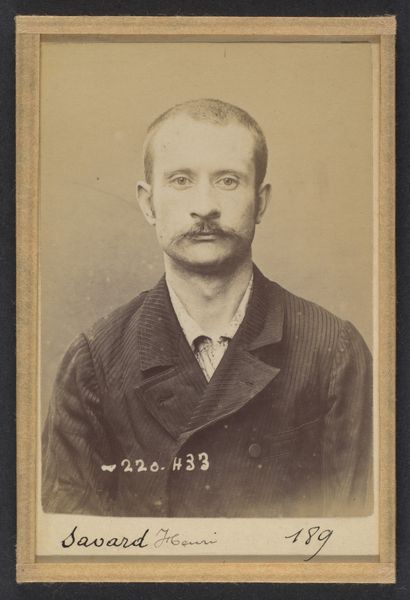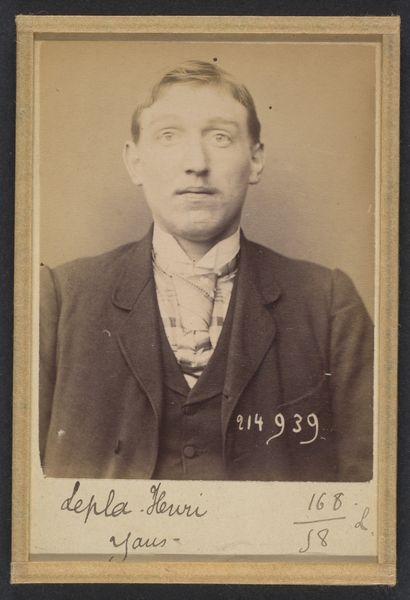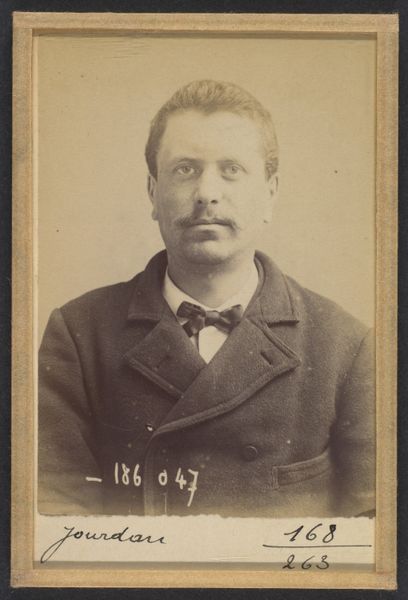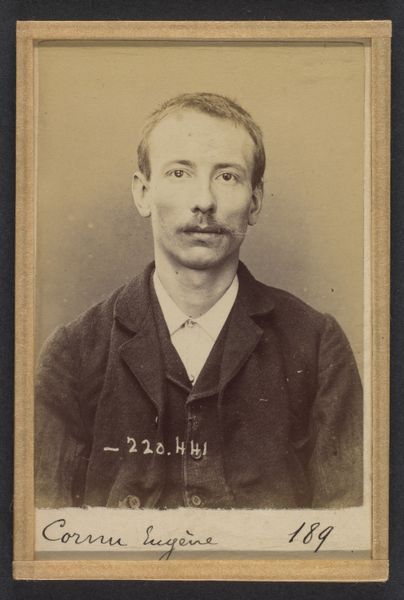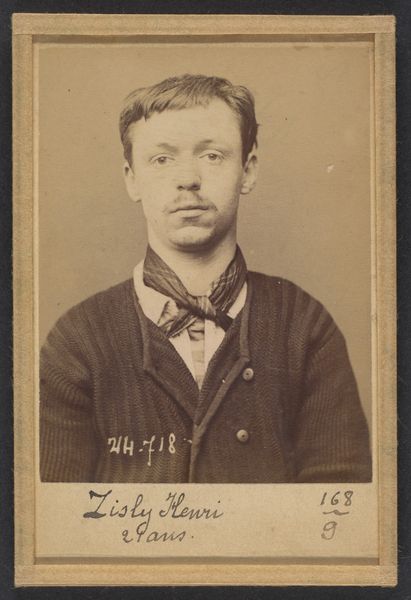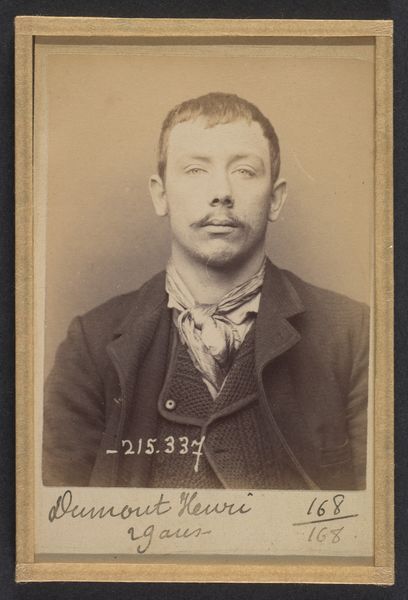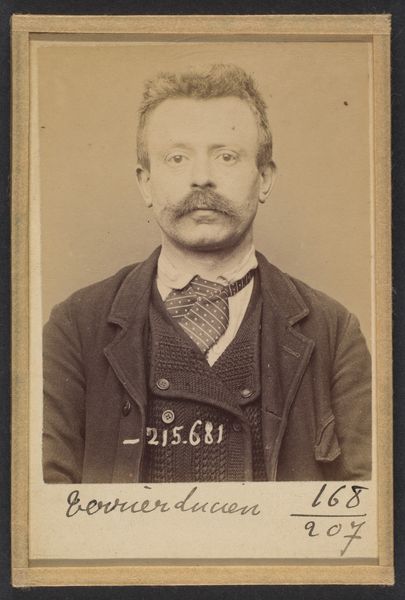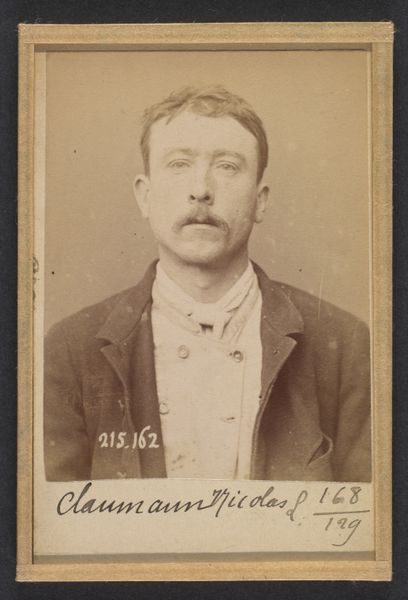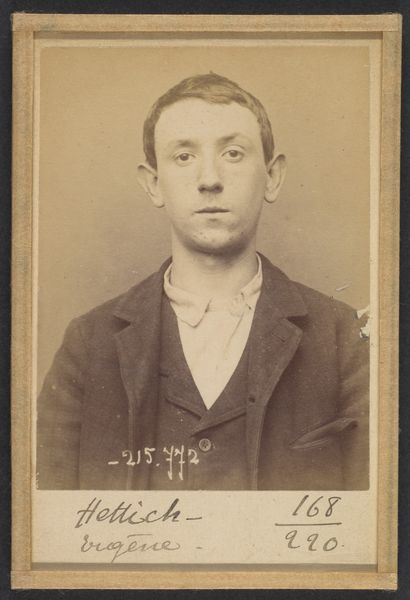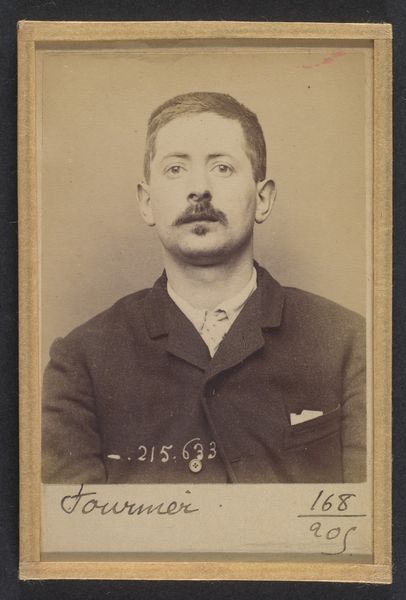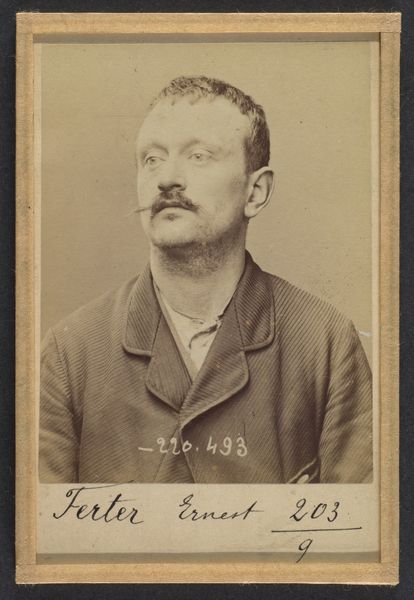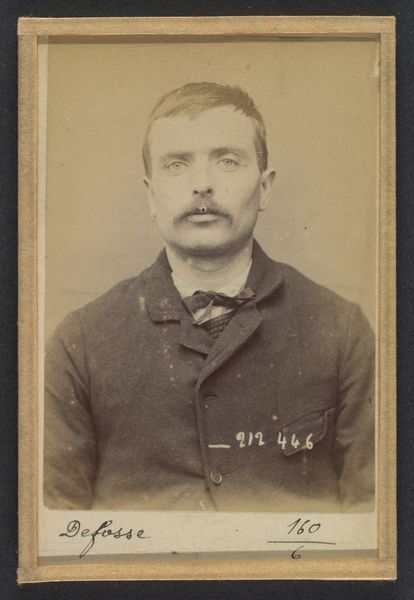
Maillabuau. Auguste, Léon. 30 ans, né le 23/8/93 à Paris Vle. Anarchiste. 2/7/94. 1894
photography, gelatin-silver-print
portrait
portrait
photography
gelatin-silver-print
history-painting
post-impressionism
realism
poster
Dimensions: 10.5 x 7 x 0.5 cm (4 1/8 x 2 3/4 x 3/16 in.) each
Copyright: Public Domain
Curator: Here we have "Maillabuau. Auguste, Léon. 30 ans, né le 23/8/93 à Paris VIe. Anarchiste. 2/7/94", a gelatin-silver print dating to 1894, now residing at the Metropolitan Museum. Editor: It's striking. There's such a starkness to it—a sense of vulnerability, almost resignation in the man's expression, despite the supposed threat of 'anarchist' written below his name. Curator: The strength here, visually, lies in the composition's deliberate rigidity. Note the symmetrical balance, the direct frontal pose, the unflinching gaze meeting the viewer's. Editor: Precisely! The subject, Maillabuau, is identified with clinical precision: age, birthplace, political affiliation. This wasn't an artistic portrait; it was an instrument of control, used to catalogue and classify individuals deemed a threat to the social order in France. His gaze seems to challenge that control. Curator: Indeed. This work employs a specific photographic language – the mugshot – elevated, or perhaps, more accurately, reduced, to the level of data. Every detail is meticulously captured, rendering the individual as an object of scrutiny. The monochromatic tones serve to further distance the viewer from the man’s potential story. Editor: And this standardization is the crux of its historical and social meaning. It shows the anxiety and persecution that arose from social structures being challenged by emerging ideas. 'Anarchist' became a marker of fear and the creation of enemies for political leverage. His slightly askew button and furrowed brow seem to betray a personal narrative crushed by the institutional machinery around him. Curator: While the institutional aspect may be of critical historical significance, the semiotic value of the piece exists outside the intent of Bertillon. One might even say this image creates its own aesthetic order through stark realism. Editor: Ultimately, Bertillon’s photograph serves as a potent reminder of the sociopolitical contexts that shape individuals and also artistic representations themselves. We must consider whose stories are considered visible, by whom, and why. Curator: A work that forces us to analyze not only the subject but also the tools and intentions of power at work.
Comments
No comments
Be the first to comment and join the conversation on the ultimate creative platform.
